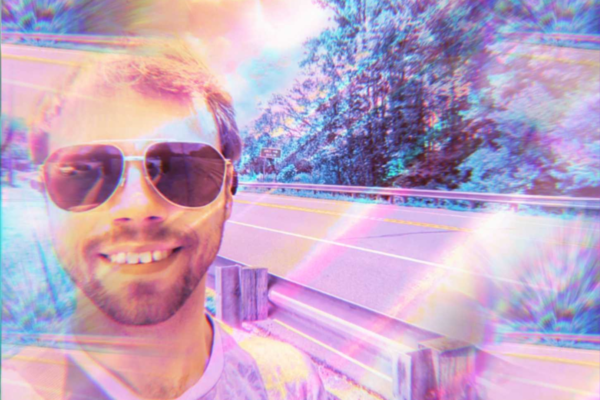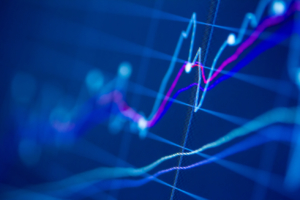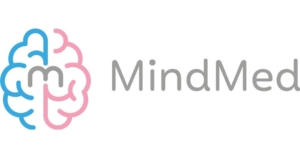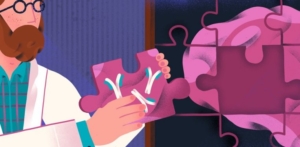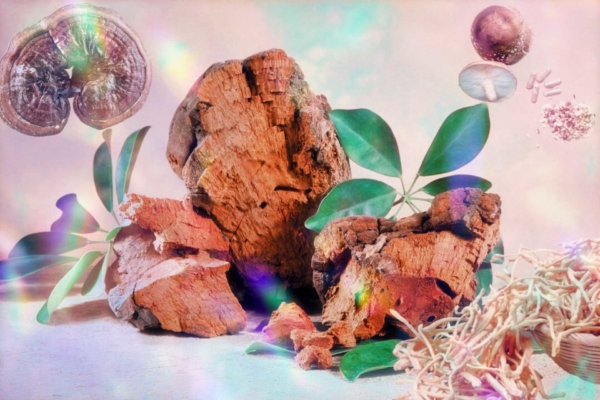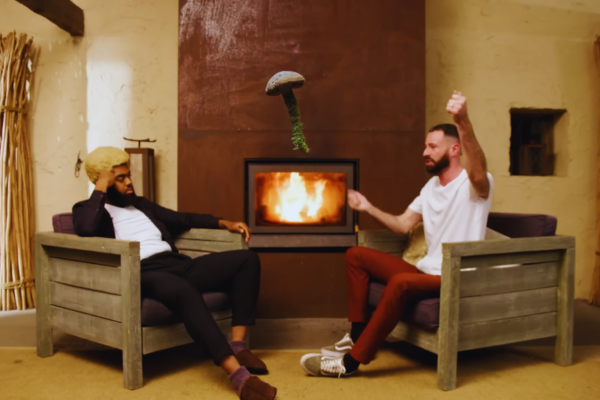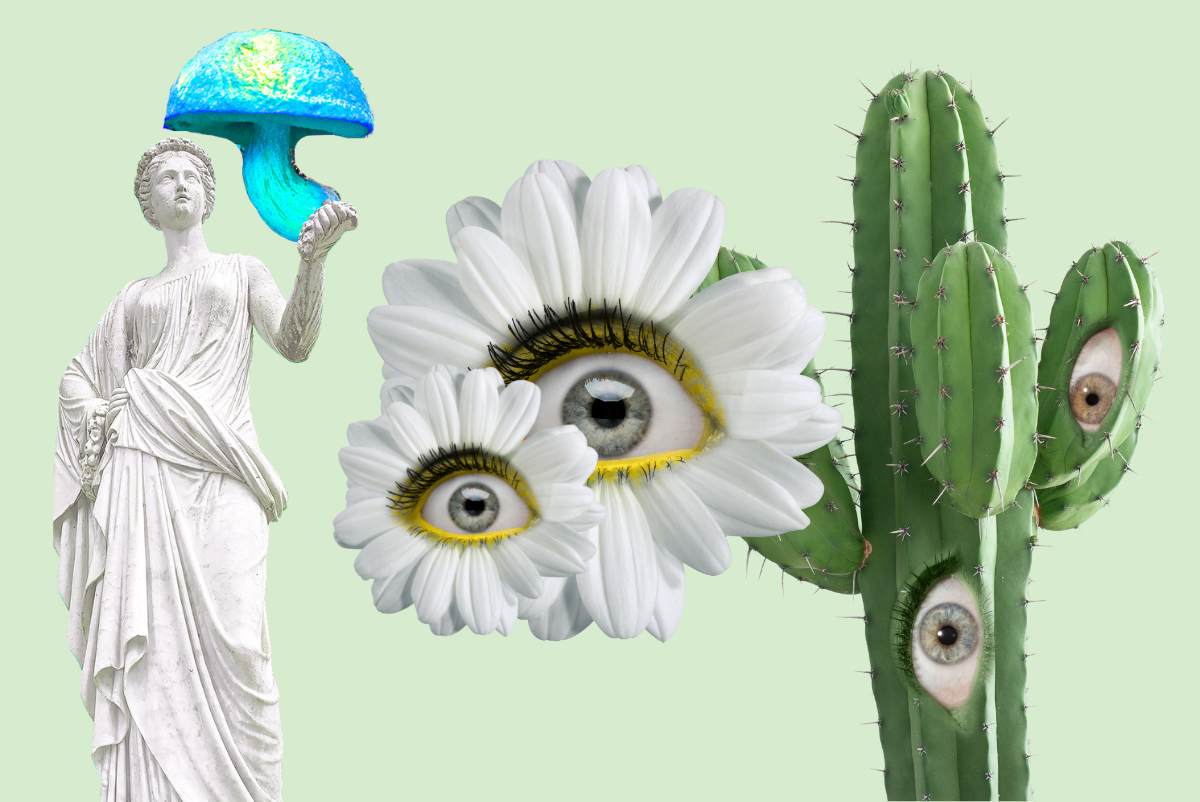
In the early seventies, anthropologist Kenneth Kensinger found himself living among the Cashinahua tribe of the Peruvian Amazon. As part of his fieldwork, Kensinger frequently observed Cashinahuans participate in ayahuasca ceremonies. Among the mind-altering, consciousness-shifting experiences he documented was something entirely unexpected yet remarkably common: extra-sensory perception.
In his field notes, Kensinger reported that many of the Casinhunahuans “who have never been to or seen pictures of Pucallpa, the large town at the Ucayali River terminus of the Central Highway, have described their visits under the influence of ayahuasca to the town with sufficient detail for me to recognize specific sites and shops.” In one particularly memorable ayahuasca session, six of the nine men informed him that his maternal grandfather had just died. Two days later, the anthropologist discovered that he had died via field radio.
Similar anecdotes long pre-date Kensinger’s observations. One of the psychedelic molecules first identified in ayahuasca was initially referred to as telepathine since it seemed to help users telepathically transmit and receive messages. As psychedelic parapsychology researcher Dr. David Luke points out, ayahuasca has long been used to access altered states of consciousness conducive to clairvoyance, precognition, telepathy, out of body experiences, spiritual communication, and psychic healing.
However, psi phenomena are not only confined to those journeying with ayahuasca. Mescaline, LSD, mushrooms, ketamine, salvia and other psychedelic substances all appear capable of triggering exceptional states of awareness that lie outside the boundaries of what is accepted as logical or possible.
Luke has researched and written extensively on parapsychological phenomena that can occur during or after a psychedelic journey. These experiences can also be described as paranormal, anomalous, transpersonal or exceptional– however you refer to them, they encompass a state of awareness that is anything but ordinary. In his most recent study, Luke lists ten experiences that people using psychedelics can commonly experience: synesthesia, extradimensional perception, out-of-body experiences, near-death experiences, encounters with entities, alien abduction, sleep paralysis, interspecies communication, possession, and psi phenomena (which includes telepathy, precognition, and clairvoyance and psychokinesis).
In one survey Luke carried out with a fellow researcher, 83.5% of psychoactive drug users reported at least one exceptional experience while under the influence compared to 29.6% of non-psychoactive drug users (who were using substances such as alcohol or prescription drugs). 50.6% experienced telepathy while tripping, compared to a scant 1.9% of non-psychoactive drug users. 43.5% of the psychoactive users had an out-of-body experience on another plane of existence, compared to 3.7% of the non-psychoactive users.
“There’s a fair amount of self-report survey research which indicates that such anomalous experiences tend to occur much more frequently under the influence of psychedelics than when under the influence of other psychoactive drugs or when sober,” reflects Luke. However, he’s also quick to point out that those who experiment with psychedelics are also more likely to believe or be open to paranormal experiences.
For most people, however, these exceptional experiences can be transient, often experienced at the peak moment of the trip, or when the individual is in a profound state of connection. In one reddit thread exploring the intersection of psychedelics and psi phenomena, psychonauts frequently report holding non-verbal telepathic conversations with friends or loved ones while tripping, like this:
“My boyfriend and I call it syncing up. Tune in and drop out. Also, it took us a while to get it back after the first time we tripped. I noticed it had a lot to do with the energy from outside and nature. We were in each other’s heads sharing thoughts and felt each other’s feelings. I figured that was us tapping into the ether and our higher universal knowledge that we are all one. I feel that psychedelics make it so we are all perceiving much much more than we normally would, which is why people are able to vibe with one another’s brain waves. This depends on your relationship with the person but I find it easiest to connect and sync back up when we meditate together.”
Luke points out, however, that psychic episodes can last for the entire trip and even beyond, sometimes priming the individual for other paranormal experiences. “Taking psychedelics tends to increase later experiences of synchronicities and other anomalous experiences,” he explains. Indeed, his own personal experiences and first-person psychedelic research suggest as much. “In my extensive professional and personal research with psychedelics, which feed into each other, I have had many, many, anomalous experiences – a lifetime of them in fact,” says Luke. “Some of them appear to be erroneous cognitions, but many of them have been uncannily vivid and veridical.”
In his recent book Otherworlds: Psychedelics and Exceptional Human Experience, Luke meticulously details first-person experimental research exploring precognition while under the influence of San Pedro. After choking down 30 grams of powdered San Pedro, he settles in to ride out the waves of nausea in anticipation of testing himself a few hours later. Once the journey is underway, he sits quietly and writes down any images or visions that appear in his mind. He then watches a pool of four short video clips and ranks them according to how closely they match his vision. To up the ante and make the experiment even edgier, he then runs a random number generator to assign numbers one through four for each clip after watching them. This double-edged experiment allows him to check whether the film clip that ranks closest to his vision is also the number-one ranked “precognitive target” clip. What’s all the more impressive is that he runs this test twenty times during his eight-hour journey, and successfully selects the precognitive target in advance eight out of 20 times – a statistic that is above chance.
“I found that the improbable correspondence between my intended visionary phenomena and the unknown target videos tended to be more thematic than literal, though in some of the better cases it was also quite direct,” reflects Luke. For instance, he describes that in one of the visions that correlated to the precognitive target film clip he saw ‘space skeletons’ that could have been the stormtroopers in Star Wars, ‘machinery in space’ that could have been related to the Death Star, and ‘helicopter blades’ that could have been linked to the grappling hook used by Luke Skywalker.
“What I think this might show is that the precognitive information is seeping through from the future, but that it is filtered through some cognitive process that somewhat distorts the information while retaining the essence of it, in a way that it can be identified with inspection. However, it’s rarely a direct facsimile, and usually more a morphed simulacrum,” he comments.
Such insights resonate with Aldous Huxley and Henri Bergson’s ideas that the brain can be understood as a filter of consciousness. Psychedelics can temporarily take the brain’s default filtering process offline, allowing access to mystical and psychic states of awareness and facilitating paranormal episodes.
“I would hazard that, if psi experiences are real –which they seem to be– is that psi is a largely unconscious and very subtle background signal which we can consciously access more easily when in altered states because we have greater access to normally unconscious mental data or processes,” reflects Luke.
Redditors waxing lyrical about the psychic powers associated with shrooms have also landed upon similar theories. As one redditor articulates: “To take it all home…we have the tendency to see our own thoughts as “our own” internal events responding indirectly to sensory stimuli from sensory organs. This is the ego, a self-imposed restriction. The power of the mushroom is its ability to dissolve barriers. In this way, the mushroom allows for people to temporarily lift this perceptual restriction, allowing us to access information previously hidden.”
Nonetheless, the science of psi phenomena and psychedelics is still far from terra firma. Luke emphasizes that we don’t really know what mechanisms are at work because our understanding of the nature of consciousness is still in its infancy, not to mention our comprehension of anomalous psychedelic experiences. Ultimately, however, he underscores the value of venturing into “otherworld cartographies” because exceptional psychedelic experiences tell us a lot about human nature and the nature of reality itself. Luke notes that the recent psychedelic renaissance is helping to subside stigmas around psychedelic use, and that interest in the benefits of mystical experience is driving further research.
“In the past, such experiences have been either demonized or, more recently, pathologized, but I’m pleased to see that the re-emerging clinical research with psychedelics is once again showing that experiences that might be called mystical are seemingly important for better clinical outcomes in the treatment of mental health conditions,” Luke points out. “Experiences that used to be typically classed as diabolical, psychotic, or delusional are now being viewed as beneficial to mental health. Psychedelics are increasingly allowing for anomalous experiences to do a complete 180 degree salutatory turn in the minds of clinicians, clergy and even growing numbers of politicians, albeit slowly.”
